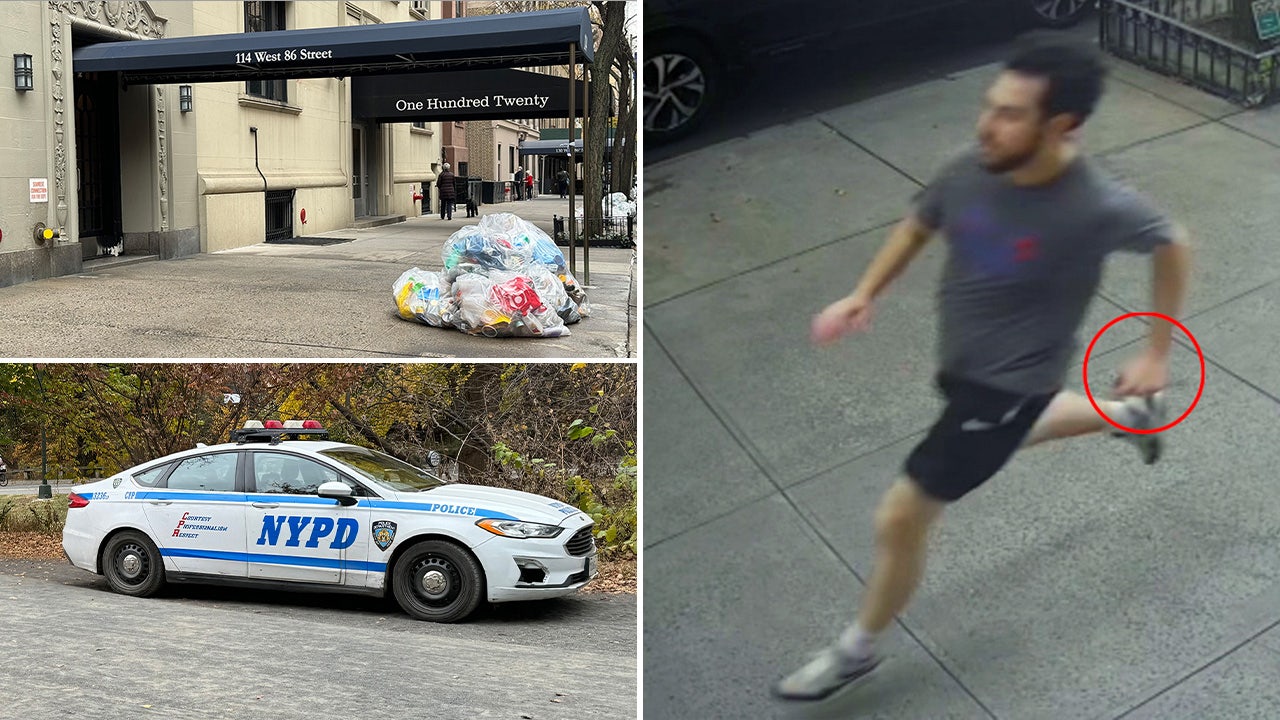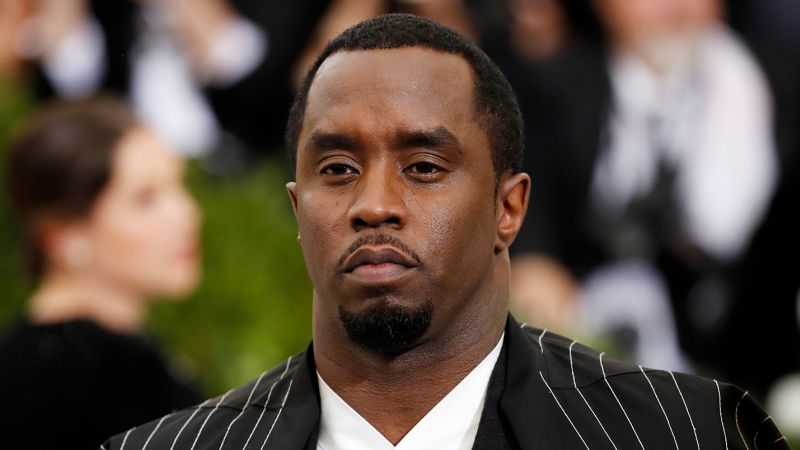The identity of bitcoin creator Satoshi Nakamoto has long been one of the biggest mysteries of the internet age. A new HBO documentary, “Money Electric: The Bitcoin Mystery,” claims to have an answer.
Yet the man that director Cullen Hoback’s film names as the 2009 founder of bitcoin is denying he is Satoshi Nakamoto.
“For the record, I’m not Satoshi,” Peter Todd, a bitcoin core developer, told CNN in a statement. Todd accused the film of being “irresponsible” and putting his life in danger.
“Cullen is grasping for straws here,” said Todd, who claimed he was not approached by HBO in the run-up to the film’s release and was not offered a chance to screen the film before it aired Tuesday night. “He is playing up a few coincidences into something much more. Ironic really: that’s a hallmark of conspiracy thinking.”
A spokesperson for HBO did not respond to CNN’s request for comment. HBO, like CNN, is owned by Warner Bros. Discovery.
However, the films’ director told CNN he is unsurprised by Todd’s denial and he remains confident in his documentary’s conclusion.
“Peter was there that day (in which he was interviewed for the film). He knows what was discussed. He had every opportunity to explain himself,” Hoback told CNN in a statement.
Speculation around bitcoin’s anonymous creator has led to countless theories. Just who is this person — or people — who coded bitcoin and then disappeared off the face of the internet in 2013, just as it exploded in value? Further fueling the mystery are the billions of dollars of bitcoin that are supposedly under Nakamoto’s control.
Hoback said he spent years tracking down the various theories for Satoshi Nakamoto’s identity before finally settling on Todd. Hoback’s evidence includes a 2010 bitcoin message board post from Todd that he concludes was written by Satoshi Nakamoto.
Solving the great internet mysteries has become a calling card for director Hoback, whose prior claim to fame was potentially unmasking Q, the man behind QAnon in the HBO series “Q: Into The Storm.”
CNN sat down with Hoback, prior to Todd’s denial, to discuss why the director is so confident in his theory, whether he’s worried about being sued, and that big dramatic confrontation at the end of the film.
This conversation has been edited for length and clarity.
CNN: The identity of the person who created bitcoin is one of the greatest mysteries of our modern age. Why does his identity matter?
Cullen Hoback: If bitcoin had petered out, if it wasn’t being embraced by nation states, wasn’t being incorporated into 401(k)s, it would be a different story. But bitcoin is increasingly becoming a major backbone of the financial system. It’s not going anywhere. Meanwhile, there is this anonymous figure who likely controls, or very possibly controls, a massive share of it — a million or so bitcoin.
So, I think that understanding if that person still holds the keys (to their crypto wallet), what the ideas and intent of that person or people, really are, is important, given bitcoin’s prominence.
CNN: Satoshi’s story — What do you think it has done for the narrative of bitcoin?
Hoback: I think that the mythos around this anonymous figure was beneficial largely because it started to take on an almost godlike quality. Like it came down from the heavens and was bestowed upon humanity. And it allowed people to kind of believe whatever they wanted about it. That it was so pure and that it was kind of the solution to all the world’s problems.
I think at this point that mythos is actually a detriment to bitcoin. I think that’s part of why trying to solve it right now is important. Because it is baked into our financial system at this point, and it touches the lives of most people.
CNN: You’re not the first journalist to try to uncover the identity of Satoshi. I’m thinking of a somewhat notorious Newsweek cover story that claimed to uncover Satoshi. How confident are you in your theory?
Hoback: Well I think we present a hell of a case in the film. And ultimately, it’s like if you were doing a trial or something, right? You’re going to make the best case you possibly can. It’s not like we have Satoshi literally sending a transaction on camera. Like that fake Satoshi did a number of years ago, when Craig Wright convinced a number of people that he was behind it. We don’t have Satoshi doing that.
We confront Satoshi who we make a strong case for in this film, and I think their reaction is in some ways more telling than even the evidence itself. So I don’t think my confidence level is as important as what the audience takes away when they see the evidence for themselves.
CNN: In the documentary, you quote someone speculating that an amateur wrote bitcoin’s code, but others have speculated that the person behind bitcoin has to be some kind of genius-level polyglot. You really feel like a 22 year-old amateur coder could create bitcoin from scratch?
Hoback: Well, those two things you said can coexist. You can be a super genius coder who is self-taught and doesn’t have a professional veneer in their code. And that’s how the code was originally described. And in fact, I think that that helps unlock a lot of this story. And it unlocked a lot for me.
Something I kept going back to is that the original original code didn’t look like it was made by a professional developer. And I’m sure people would debate that. And I had professional C++ coders review the code, review the code of the suspects and make sure, you know, they were someone who could have written this.
Could somebody when they were young have written this? Yes. I think it makes more sense. They don’t actually have power and prominence and prestige. They’re just someone you’ve never heard of before. And the anonymity actually allows you to believe that they could be some famous cryptographer and not some kid still in school.
CNN: So let’s assume that your theory is correct and that it is Peter Todd. Why do you think he agreed to be interviewed in this documentary if he were harboring this incredible secret?
Hoback: I think there’s there’s a psychology to these individuals who have done something that has a massive impact in the world — create these massive global movements — and they’re harboring the secret. And imagine if you were harboring that secret. Would you want some credit for it? And would you at some point maybe believe: Hey, I’ve gotten away with it this long. Going on camera and talking to these guys it’ll probably be even better cover. Who would believe that Satoshi would actually go on camera?
And if you look at Peter Todd specifically… he’s really into game theory. He’s really into creating alternate identities. And he likes the cat-and-mouse game. He likes to outsmart people and has to prove he’s the smartest guy in the room. I think that’s part of why he went on camera.
CNN: In the end of the film, you confront Peter Todd. What was that day like for you? And how long had you been in contact with him before putting together your theory?
Hoback: The first time I met Peter Todd was with (Blockstream CEO and oft-rumored bitcoin creator) Adam Back, actually. Adam introduced me to Peter. It was at one of these bitcoin conferences in Latvia. And when Adam introduces you to someone, you pay attention. So, that’s why I shot that first scene with the two of them and the space monkey. But I didn’t really know who Peter Todd was at that time.
And we had this scene. I’m like: Okay, I guess maybe he’s a player in all of this. I didn’t investigate him in depth at that point. He wasn’t even on my radar. But as time went by, maybe a year or so later we’d shot a couple of scenes together and I wondered… (early bitcoin investor) Roger Ver is claiming that maybe he works for the government. Let’s interrogate that some. It forced me to look more and more at Peter Todd’s background. But it wasn’t until I kind of put together that question around the nature of the code. And it made me feel like: Okay, well maybe it really isn’t Adam.
Adam had been getting a lot of heat lately. He doesn’t want to be perceived as Satoshi. And some of that heat was coming from Peter. Peter even has an old tweet where he says: pro-tip, if you want to create a revolutionary currency, you should frame someone. And I think Adam was tired of being framed. And so when you watch that end sequence, I think that Adam’s reaction or lack of saying really very much, and Peter’s reaction is, in some ways, more telling than the evidence itself.
CNN: I want to ask you about one of the key pieces of evidence that you have, which is this 2010 forum post that was posted by Peter Todd that you suspect was actually meant to be posted by Satoshi. I looked at that post carefully and I noticed the use of asterisks. When I looked back, I didn’t see any use of asterisks in Satoshi’s post, but I did find multiple uses of similar asterisks in Peter Todd’s forum posts and tweets.
Hoback: I think that if you look at the way that it’s written, how he continues the sentence is very revealing. I looked at the asterisks as well. You can see that italics are used a fair amount. He would have had the ability, I think, to go in and edit that post if he wanted to. In fact, that was the main reason I gravitated towards this question: Why did you not go in and delete the post?
CNN: I was about to ask you that exact question.
Hoback: When I put together the columns for and against Peter, in the “against” column was really: Why did you let this post stick around?
And that’s the reason that I confront him on that. And that’s one of the reasons that we kept in the film. And his answer to that is this sort of megamind game theory response. His reaction just shows how much time he thought about what he’d written there, how much he reflected on it. He even a name for it. “The correction post.” Why would you obsess so much over this post? Why disappear immediately after that for a number of years? If you put yourself in the mindset at the time, there’s any number of reasons to do that.
Now, something like the asterisks. Maybe he went in and edited it. Maybe not. But Satoshi does use italics, and the asterisks sometimes can create italics in the post. So to me, I think that that’s a kind of minor discrepancy.
In a statement to CNN, Todd denied that the post was supposed to be written by Satoshi, calling it “a coincidence.”
“I was simply pointing out a minor correction to what Satoshi wrote,” Todd told CNN in a statement. “Note that the bitcointalk forum has the ability to edit posts, so it doesn’t even make that much sense that Satoshi would follow up with another message rather than just editing the original to correct the mistake.”
CNN: Were you worried that HBO wouldn’t allow you to name Peter Todd as your primary suspect?
Hoback: In the film we’re just presenting all of the evidence, you know? Everything is factual. I gave Peter Todd every opportunity to contradict the claims, to explain the claims. You know, to say: Hey, I’m not behind this. He doesn’t take that opportunity. In fact, he’s the only person that I interviewed that claims to be Satoshi. You know, it’s part of his game theory, but also, he’s the only one who does it.
Of course we did a thorough fact check, and of course, we ran this by our legal. But, you know, everything in this is factual. You’re watching his reaction in real time. I don’t think there were ever any concerns because the case we present is based entirely on evidence.
Responding to Todd’s denial, Hoback told CNN that Todd “should really watch the film before making such comments.”
“He’s had over a year to prepare for this moment,” Hoback told CNN. “Peter’s got next-level game theory. His reaction doesn’t surprise me at all.”
Hoback also noted Todd in the documentary suggested Adam Back was Satoshi Nakamoto. “So he should self-reflect on his statement, considering how willing he was to implicate others of being Satoshi,” Hoback added.
Read the full article here


















